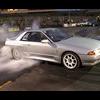Rb20 Running Lean
Announcements
-
Similar Content
-
Latest Posts
-
Mainly being afraid of breaking something on something i've poured so much money into haha
-
Hey ive gone for a terminated harness on my build so selling brand new unused and unopened piggy back harness https://www.haltech.com/product/ht-141357-elite-2000-2500-nissan-skyline-r32-33-r34-gt-r/ Located Bathurst NSW price $600 + postage
-
By drifter17a · Posted
The trigger kit I have is similar to the one in the link below. While going through Facebook, I saw someone else mention a similar issue, and I’m starting to think this could be related to the crank gear itself. I understand these parts are CNC machined, but maybe some earlier versions or individual pieces might have slight inconsistencies—it just doesn’t look right in my case. https://www.facebook.com/share/16an8evZd9/?mibextid=wwXIfr I originally installed the crank gear using the thin OEM washer, but as shown in the attached photo, the timing belt walks very close to the edge. When I tried using a Nitto washer—which is thicker—it actually made the issue worse. The belt walks about 1mm off the front edge, which raises more concern about alignment. I’ve gone through the full process of elimination: The tensioner pulley and bolt are brand new and installed correctly. The bolt isn’t bent and is oriented properly. The back of the tensioner and the idler pulley are clean and seated correctly. The idler sits slightly more forward, which I understand is due to its design. I’ve experimented with both tight and loose belt tension, but it makes no difference. As soon as the engine runs, the belt immediately walks forward again—even if I reset it beforehand. At this point, I’m considering replacing the crank gear with your Race Version 1 (12-tooth), but before purchasing, I wanted to ask: Are you aware of any alignment issues when using this gear? Would this gear help keep the belt aligned correctly, or could the walking still occur? Does it work with a standard missing-tooth crank and rear washer? Is there any specific crank setup or install procedure required? For reference, I’m not using a front washer, as the PRP crank gear seems to replace the need for one. Looking forward to your advice. -
Yep, looks that way. Never driven an E30 or R31 so I can only imagine
-







Recommended Posts
Create an account or sign in to comment
You need to be a member in order to leave a comment
Create an account
Sign up for a new account in our community. It's easy!
Register a new accountSign in
Already have an account? Sign in here.
Sign In Now